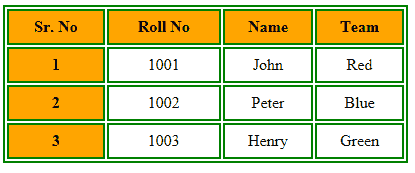Important GIT Commands Daily Use.
 |
| Important GIT Commands Daily Use. |
Getting Started
Set the name and email that will be attached to your commits and tag
$ git config --global user.name "Amol Gadage"
$ git config --global user.email "amolgadge666gmail.com"
Create new repository
$ git init (in project working directory)
Adding files and committing
$ git add . (adds all files under current directory)
$ git commit -m 'initial commit'
Checking status
$ git status
$ git log [--pretty=oneline]
Cloning a repository from GitHub
Cloning a public repository
$ git clone git://github.com/path-to-repository/project.git
Cloning a private repository (to which we can later push changes):
$ git clone git@github.com:username/project.git
Synchronizing changes
Pull changes from the original source of clone (no need to specify remote repository name as it is stored when the repository was first cloned):
$ git pull
Make changes, add and commit then push updates to the remote repository
$ git push
Branches
$ git branch mybranch (create the branch named 'mybranch')
$ git checkout mybranch (switch to the branch)
$ git checkout master (switch back to the master branch)
$ git branch (list all branches)
Pushing a branch
$ git push origin mybranch
Merging a branch
$ git checkout master (first switch to the master branch)
$ git merge mybranch (merge all changes from mybranch into the master branch)
$ gid add <file> (fix and add any conflicts)
$ git commit -m 'merged changes'
Delete a branch
$ git branch -d mybranch
Deleting a remote branch
$ git push origin :mybranch
Tags
Showing tags
$ git tag [-l v1.*]
Create annotated tag
$ git tag -a v1.5 -m 'version 1.5'
Tagging an existing commit
$ git tag -a v1.1 -m 'version 1.1' <*checksum*> (checksum from git log)
Pushing tags
$ git push --tags
Logs
View changes (patches)
$ git log -p
View Stats
$ git log --stat
Use one-line output
$ git log --pretty=oneline
View branches
$ git log --pretty=oneline --graph
Search commit messages
$ git log --grep='pattern' --pretty=oneline
File History
$ git log --pretty=oneline -- <file>
Directory History
$ git log --pretty=oneline --all -- <dir>
Do not show merges
$ git log --pretty=oneline --no-merges
Show last 5 commits
$ git log --pretty=oneline -5
Commits between two other commits
$ git log master..mybranch --pretty=oneline
$ git log
Diff
Show modifications not yet staged
$ git diff
Show modifications not yet committed
$ git diff --staged
Show all changes since the last commit
$ git diff HEAD
Show changes to a file since a specific (tagged) commit
$ git diff v1.0 -- <file>
Show stats for differences between two (tagged) commits
$ git diff v1.0 v1.1 --stat
Undo Changes
Unstage a file
$ git reset HEAD <file>
If you cannot remember this create an alias as follows:
$ git config --global alias.unstage 'reset HEAD'
$ git unstage <file>
Discard changes to a file
$ git checkout -- <file>
Breaking Existing Commits to a Branch
Make a note of the SHAR for the commit that you want to rollback to:
$ git log --pretty=oneline
Then switch to the branch and reset the head to the required commit
$ git branch mybranch
$ git reset --hard <SHAR>
If the previous head was pushed to a repository
$ git push --force (deletes all later changes!)




0 Comments